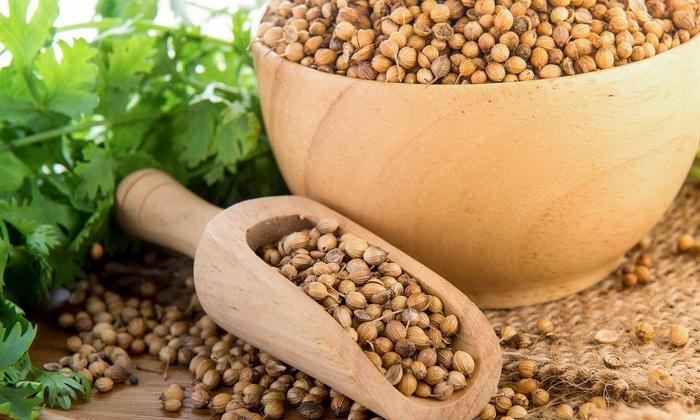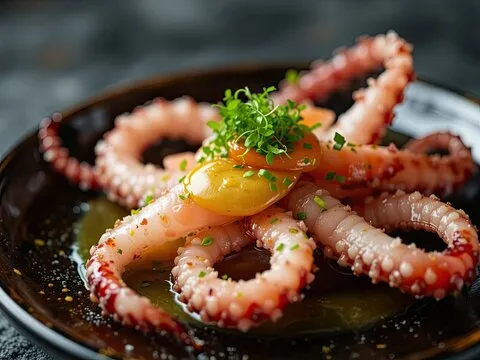Koriandri: Herb That Connects Flavor, Culture, and Health
Introduction: The Essence of Koriandri
Koriandri, also known globally as coriander or cilantro, is a vibrant herb that brings a burst of freshness to countless cuisines. Its appeal lies not only in its distinct aroma but also in its dual nature — the leaves serve as a flavorful herb, while the seeds transform into a warm, nutty spice. This versatility makes Koriandri a cornerstone of both traditional and contemporary cooking.
Across continents, Koriandri has earned a beloved place in kitchens for its ability to elevate dishes with a refreshing, citrusy note balanced by earthy undertones. From zesty Mexican salsas to rich Indian curries, its adaptable flavor harmonizes beautifully with spices, vegetables, and proteins alike.
Yet, beyond its culinary charm, Koriandri carries centuries of cultural significance and medicinal value. In this article, we will explore the origins, characteristics, culinary roles, and health benefits of this remarkable herb that continues to enchant palates around the world.
What is Koriandri?
Scientifically known as Coriandrum sativum, Koriandri is a member of the Apiaceae family — the same family as parsley, dill, and celery. Every part of the plant, from its delicate leaves to its tiny seeds, offers distinct flavors and applications.
One common confusion surrounds the difference between Koriandri, coriander, and cilantro:
- Koriandri (or coriander) generally refers to the entire plant, including seeds and leaves.
- Cilantro is the term used mainly in North America for the fresh green leaves.
- Coriander often describes the dried seeds used as a spice.
This herb’s versatility is unmatched — the leaves bring brightness to dishes, seeds add warmth to spice blends, roots intensify curries and soups, and even stems contribute aromatic depth to broths and sauces.
Beyond the kitchen, Koriandri holds an honored place in natural medicine. It has been used traditionally to aid digestion, detoxify the body, and soothe inflammation, showcasing its dual importance in both culinary and holistic health practices.
History and Origin of Koriandri
Koriandri’s story stretches back over 7,000 years, tracing its roots to the Mediterranean region and parts of Asia. Archaeological discoveries reveal that ancient Egyptians valued this herb so deeply that it was placed inside tombs — including that of Pharaoh Tutankhamun — as a symbol of vitality and protection.
From Egypt, Koriandri’s fame spread through the ancient Greek and Roman civilizations, where it was used in medicine, perfume making, and food preservation. The Romans are credited with introducing it to Northern Europe, while ancient texts from India describe its presence in Ayurvedic treatments.
As trade routes expanded during the Middle Ages, Koriandri journeyed eastward into China and Southeast Asia and westward into the Americas. Traders and explorers carried its seeds across continents, where it was quickly embraced for its robust flavor and healing properties.
Today, Koriandri enjoys global recognition. Whether in an Indian curry, Mexican salsa, Thai noodle dish, or Mediterranean salad, it remains a universal ingredient that bridges culinary traditions and histories.
What Does Koriandri Look Like?
The Koriandri plant is a delicate annual herb, typically growing between 1 to 3 feet tall. It features feathery, flat green leaves, resembling parsley but with a more aromatic scent. The plant produces small white or pinkish flowers that cluster together in umbrella-shaped formations known as umbels. As it matures, these flowers develop into round, light-brown seeds — the spice form of Koriandri.
Fresh Koriandri has a soft, bright texture and a zesty-citrus aroma, while dried leaves tend to lose some of their fragrance but retain flavor. The seeds, on the other hand, emit a warm, nutty scent with hints of orange peel when crushed.
To identify high-quality Koriandri, look for:
- Fresh leaves that are bright green and unwilted.
- Seeds that are plump, golden-brown, and aromatic when rubbed between your fingers.
- Aroma that is distinct yet pleasant — not musty or overpowering.
The sensory combination of sight, scent, and texture makes Koriandri instantly recognizable and irresistible to herb lovers.
Culinary Uses of Koriandri
Koriandri’s charm lies in its ability to enhance dishes in both herbal and spice forms. Chefs and home cooks alike celebrate its dynamic nature, allowing it to shine in salads, sauces, and even desserts.
Uses of Fresh Leaves:
The leaves are often sprinkled on top of curries, soups, or tacos just before serving to preserve their bright aroma. They’re also a key ingredient in green chutneys, guacamole, and fresh salads, offering a refreshing burst of flavor.
Uses of Seeds:
Koriandri seeds, when dried and ground, add a warm, citrusy, and slightly nutty depth to dishes. They’re essential in spice blends like garam masala, curry powder, and ras el hanout, commonly used in Indian, Middle Eastern, and North African recipes.
Regional Highlights:
- Asia: Used in curries, stir-fries, and spicy noodles.
- Europe: Adds flavor to bread, sausages, and hearty stews.
- Latin America: A key player in salsas, tacos, and soups.
- Middle East: Integral in spice rubs, lentil dishes, and meat marinades.
Pro Tip:
To balance Koriandri’s strong flavor, combine it with ingredients like lemon juice, yogurt, or coconut milk. This tones down its intensity while enhancing its aromatic appeal.
Nutritional Profile and Health Benefits of Koriandri
Koriandri is as nourishing as it is flavorful. Packed with essential vitamins and minerals, it supports multiple bodily functions and overall wellness.
Key Nutrients in Koriandri:
| Nutrient | Function |
|---|---|
| Vitamin A | Supports eye health and skin regeneration |
| Vitamin C | Boosts immunity and fights free radicals |
| Vitamin K | Strengthens bones and aids blood clotting |
| Iron | Promotes healthy blood circulation |
| Magnesium | Regulates metabolism and muscle function |
Health Benefits:
- Improves Digestion:
The essential oils in Koriandri stimulate digestive enzymes, reducing bloating and promoting gut balance. - May Lower Cholesterol:
Studies suggest that Koriandri seeds help decrease bad cholesterol (LDL) while increasing good cholesterol (HDL). - Enhances Immunity:
Rich in vitamin C and antioxidants, Koriandri strengthens the body’s defense system. - Promotes Healthy Skin:
Its antibacterial and anti-inflammatory compounds can help clear acne and soothe irritation. - Fights Inflammation:
The herb’s natural compounds, such as cineole and linoleic acid, may help reduce chronic inflammation.
Regular consumption of Koriandri not only adds taste to meals but also contributes to a balanced, health-supportive diet.
How to Incorporate Koriandri into Your Daily Diet
Incorporating Koriandri into your meals is simple and rewarding. Its versatility makes it suitable for both raw and cooked dishes.
Simple Ways to Use Koriandri:
- Smoothies & Detox Drinks: Add a handful of fresh Koriandri leaves to green juices for a refreshing, cleansing boost.
- Soups & Stews: Stir in chopped leaves at the end of cooking for a burst of freshness.
- Marinades & Sauces: Blend ground seeds or leaves with garlic, lemon, and olive oil for aromatic marinades.
- Salad Dressings: Mix finely chopped leaves with yogurt or vinaigrette for a herbal twist.
- Homemade Koriandri Tea: Steep crushed seeds in hot water to aid digestion and reduce bloating.
Storage Tips:
- Store fresh leaves in the refrigerator wrapped in a damp paper towel or in an airtight container.
- Keep seeds in a cool, dry place to preserve their aroma.
- For longer shelf life, freeze chopped leaves in ice cube trays with olive oil.
With these simple methods, you can enjoy the freshness and health benefits of Koriandri daily, transforming your cooking and well-being.
Growing Koriandri at Home
One of the most rewarding experiences for culinary and gardening enthusiasts is growing Koriandri at home. This versatile herb thrives in various climates, making it one of the easiest and most rewarding plants to cultivate — whether on a sunny balcony, windowsill, or backyard garden.
Step-by-Step Guide to Growing Koriandri:
- Choosing the Right Soil and Pot:
Koriandri prefers loose, well-draining soil rich in organic matter. A mix of garden soil and compost in a medium-sized pot works perfectly. Ensure your pot has drainage holes to prevent root rot. - Sunlight and Watering Needs:
This herb loves sunlight — about 4–5 hours daily. However, in extremely hot climates, partial shade helps prevent the plant from bolting (producing seeds prematurely). Keep the soil consistently moist but never waterlogged. - Harvesting Tips:
Koriandri leaves can be harvested once the plant reaches about 6 inches tall. Trim the outer leaves first to encourage new growth. When the plant begins flowering, seeds can be collected once they turn brown and dry — these are the coriander seeds used as spice.
Benefits of Growing Your Own Koriandri:
- Enjoy fresh flavor year-round without store dependency.
- Save money on herbs and spices.
- Promote sustainable living by reducing packaging and transportation waste.
- Gain a deeper connection with your food through gardening mindfulness.
Koriandri in Culture and Symbolism
Throughout history, Koriandri has been more than just a kitchen staple — it has carried rich cultural symbolism and spiritual significance. In many ancient texts, it represented purity, vitality, and renewal.
- Ancient Literature and Traditions:
Egyptians used Koriandri seeds in burial rituals, symbolizing eternal life. In ancient Greece, it was a symbol of love and was used in perfumes and wines.
In India, dhania (as it’s locally known) has long been associated with festivals and sacred ceremonies. - Religious and Healing Practices:
Traditional Chinese medicine and Ayurveda have valued Koriandri for its cooling and detoxifying properties. It was often used in healing tonics and herbal remedies to balance the body’s energy. - Cultural Connection:
Across the world, from Middle Eastern stews to Latin American tacos, Koriandri continues to unite people through flavor. Its universal appeal makes it a symbol of how nature connects humanity through shared taste and tradition.
Why Some People Taste Soap in Koriandri
While most people find Koriandri’s taste refreshing and citrusy, a small percentage of individuals describe it as “soapy.” This isn’t imagination — it’s genetic science.
- The Genetic Explanation:
The OR6A2 gene is responsible for detecting aldehyde chemicals, which are also found in soaps and detergents. People with a heightened sensitivity to this gene perceive these same aldehydes in Koriandri leaves — hence, the soapy taste. - Myths vs. Science:
Myth: “Koriandri is bad or spoiled if it tastes like soap.”
Fact: The plant is perfectly fine; it’s simply how certain individuals’ taste receptors interpret the aroma compounds.
This genetic difference highlights the fascinating complexity of human biology and how our DNA can shape our culinary preferences.
Conclusion: The Timeless Charm of Koriandri
From the fertile fields of the Mediterranean to kitchens across the globe, Koriandri has journeyed through centuries, weaving itself into the story of human culture. It’s not just an herb or spice — it’s a bridge between flavor, tradition, and wellness.
Its leaves brighten salads and soups; its seeds enrich curries and breads. Beyond taste, its medicinal value and symbolic heritage make it a true gift of nature. Whether you enjoy it fresh from your garden or sprinkled atop your favorite dish, Koriandri continues to nourish both body and spirit.
FAQs About Koriandri
What is Koriandri used for?
Koriandri is used as both a fresh herb (leaves) and a dried spice (seeds) in global cuisines. It adds freshness to salads, chutneys, and salsas, while its seeds flavor curries, soups, and sauces.
What’s the difference between coriander and cilantro?
They come from the same plant. “Cilantro” refers to the fresh leaves, while “coriander” usually means the dried seeds.
Can I grow Koriandri at home easily?
Yes! Koriandri grows quickly in pots or gardens with sunlight, moderate watering, and well-draining soil. It’s a perfect beginner-friendly herb.
What are the top health benefits of Koriandri?
It supports digestion, boosts immunity, improves skin health, and contains antioxidants that help reduce inflammation.
Why do some people dislike the taste of Koriandri?
Certain people carry a gene (OR6A2) that makes them perceive Koriandri’s natural aldehydes as soapy — a harmless but unique genetic trait.






